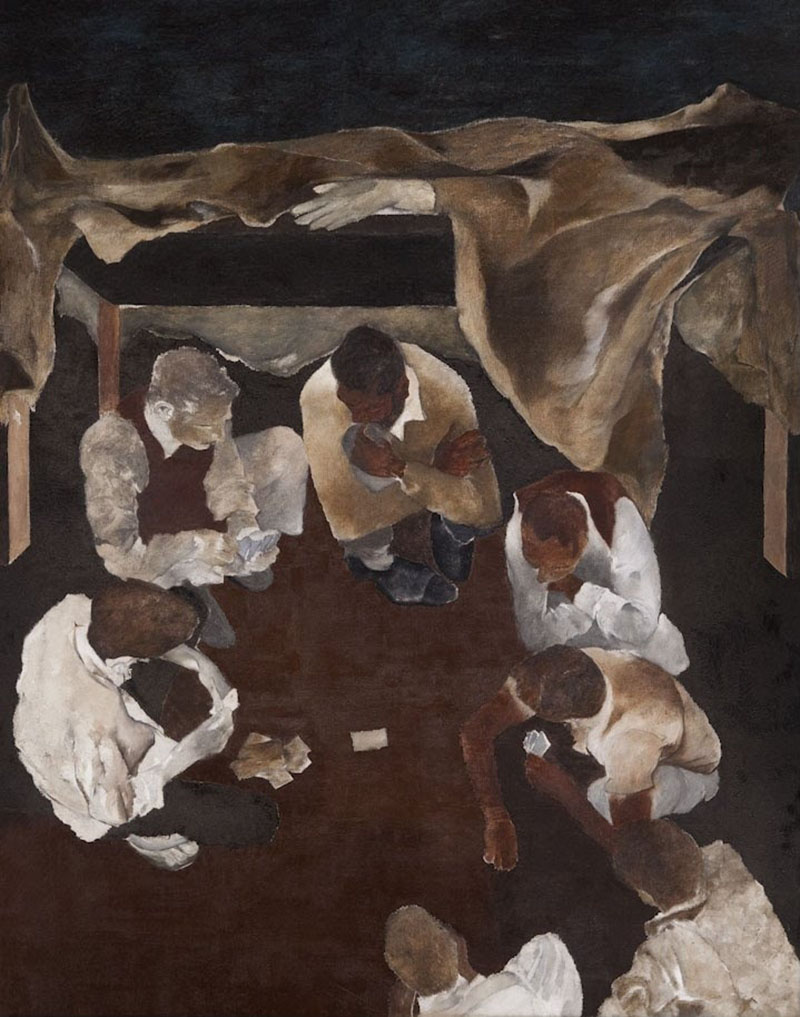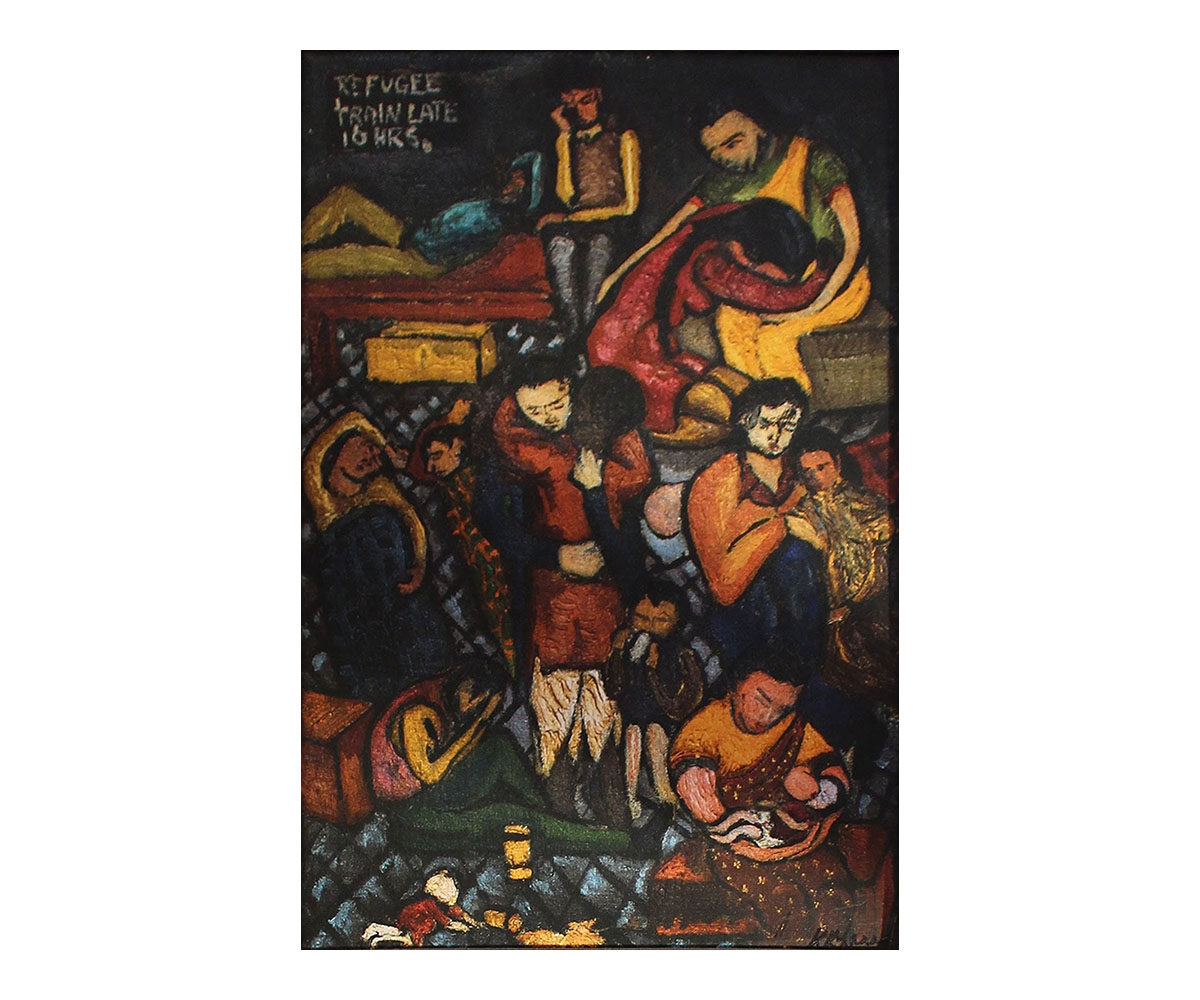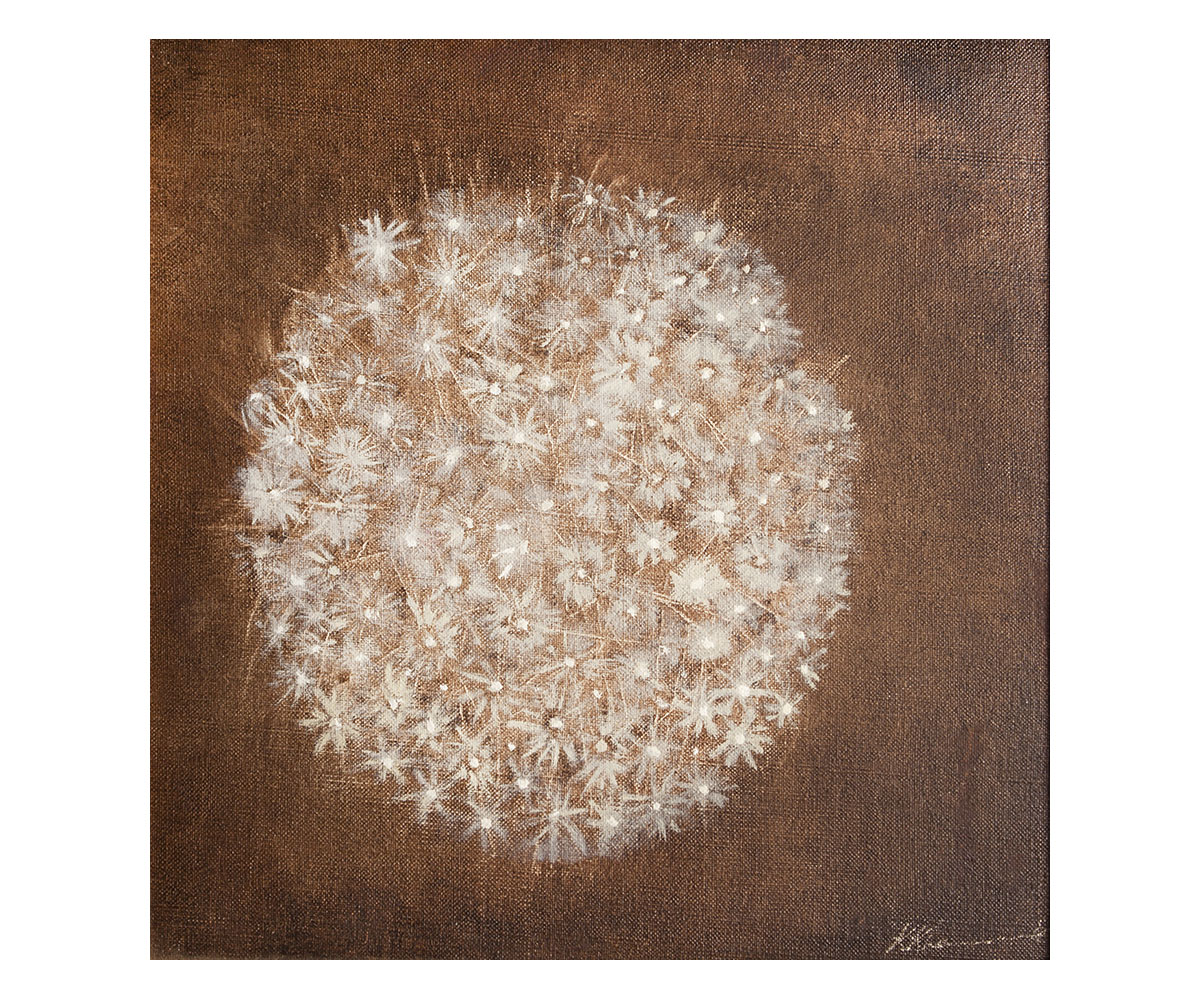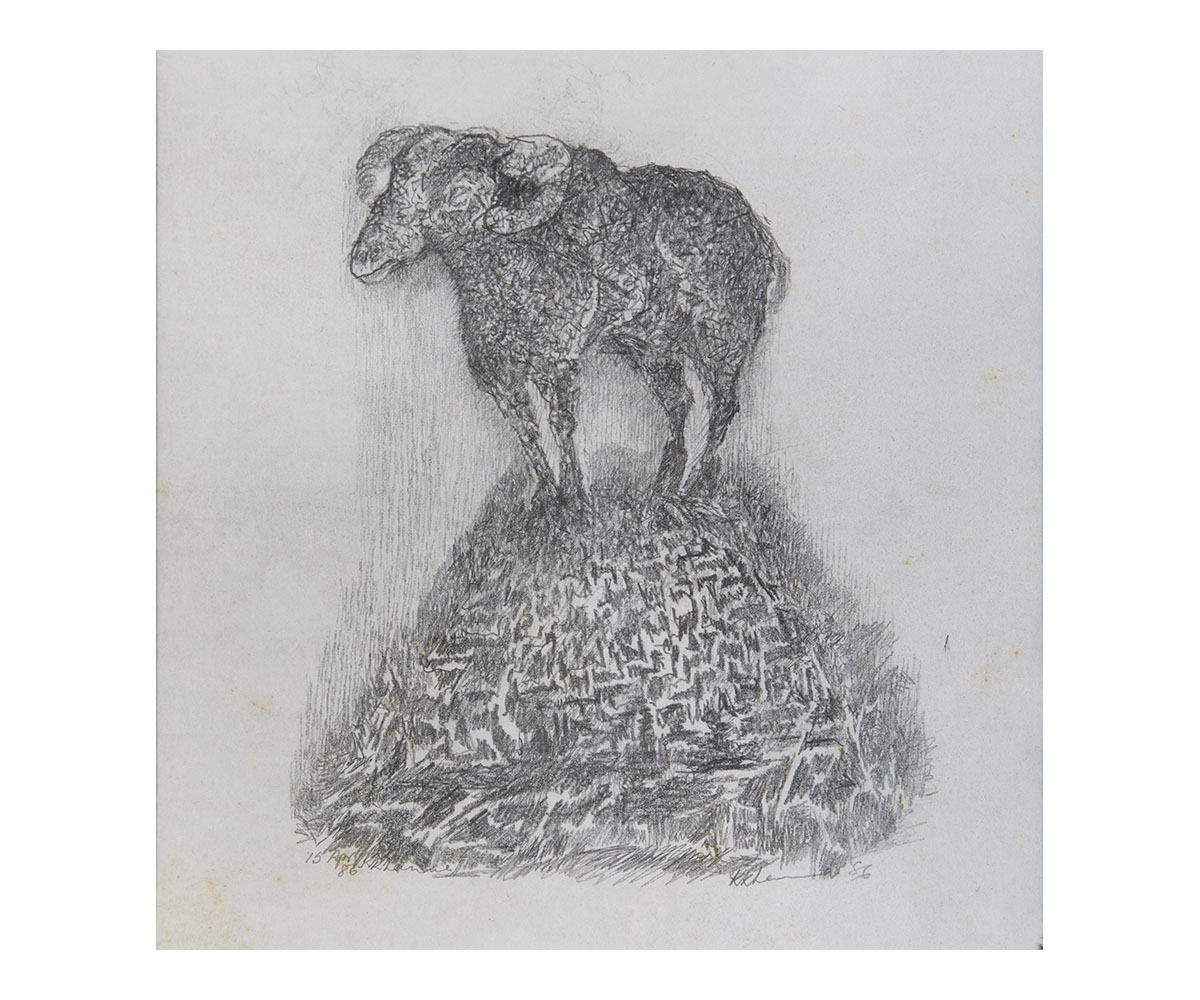ARTICLE
Krishen Khanna
In 1953 he moved to the Madras (Chennai) branch of his bank. Over the next decade, he continued painting while working as a banker, before quitting his job in 1961 to become a full-time artist. The following year Khanna moved into his family home in a resettlement colony in New Delhi, and travelled to Japan under a Rockefeller fellowship. The ink wash painting technique of sumi-e that he encountered there inspired him to create a body of work with ink on rice paper. He returned to India in 1964.
Like most of his contemporaries in the PAG, Khanna had a strong commitment to figurative painting over abstraction. His works emphasise the human condition through figural depictions, drawing from everyday life as well as historical events. His paintings portray a diverse range of subjects, from mythological figures to migrant labourers. In series such as Nocturne and paintings such as Rear View, Khanna focused on the lives of the migrants in Delhi. From the 1980s onwards, he became especially interested in the figure of the bandwallah, a member of the colonial-era marching bands that became widely popular in Indian wedding processions. Exemplified by the vividly coloured Expressionistic painting Bandwala (1989–90), these musicians became a recurring subject in his work. Khanna’s oeuvre also comprises religious and mythological themes — as exemplified by the painting Christ and his Apostles and the Mahabharata series — and scenes from daily life, seen in paintings such as Dhaba. Between 1980 and 1984, he painted The Great Procession, a ceiling mural in the lobby of the ITC Maurya hotel in New Delhi that has achieved particular renown. Drawing on intimate personal experience, Khanna is also one of the few artists to have painted scenes from the Partition.
Khanna is also known for his sculptural works in bronze and acrylic on fibreglass, such as The Blind King (2006) and Killing of Jatayu, and numerous figures of musicians, such as bandwallahs playing the trumpet, horn and drums, as well as mridangam, flute and harmonica players.
Khanna has exhibited widely, both in India and internationally. In 2002, he published his memoirs titled Memories, Anecdotes, Tall Talks. His career has been the subject of art critic Gayatri Sinha’s books Krishen Khanna: A Critical Biography (2001) and The Embrace of Love (2005), a monograph. In 2013, the Raza Foundation published My Dear: Letters Between Sayed Haider Raza & Krishen Khanna (2013). Khanna received the Padma Shri in 1990, the Lalit Kala Ratna in 2004, and the Padma Bhushan in 2011.
At the time of writing, Khanna lives and works in Gurugram.
Bibliography
Chishti, Seema. “Why Krishen Khanna Still Paints at 95.” Indian Express, February 7, 2020. https://indianexpress.com/article/express-sunday-eye/why-krishen-khanna-still-paints-at-95-6256171/.
Dhoomimal Gallery. “Krishen Khanna.” Accessed May 10, 2021. https://dhoomimalgallery.com/artist_info.php?id=Mzc=.
D’Mello, Rosalyn. “Krishen Khanna: The Underrated Modernist.” Open Magazine, November 9, 2016. https://openthemagazine.com/art-culture/krishen-khanna-the-underrated-modernist/.
Grosvenor Gallery. “Krishen Khanna.” Accessed May 10, 2021. https://www.grosvenorgallery.com/artists/61-krishen-khanna/overview/.
JNAF. “Krishen Khanna.” Accessed May 10, 2021. https://jnaf.org/artist/krishen-khanna/.
Saffronart. “Krishen Khanna.” Accessed May 10, 2021. https://www.saffronart.com/artists/krishen-khanna.
Vadehra Art Gallery. “Krishen Khanna.” Accessed May 10, 2021. https://www.vadehraart.com/krishen-khanna-drawings-paintings.











